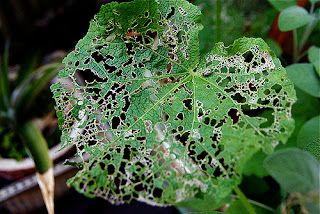Then, you have some of the more common, human combinations, Peanut Butter and Jelly, Chocolate and Peanut Butter (two great tastes that taste great together, let's see who remembers THAT commercial) and salt and pepper. These are examples of two things being mixed together but still retain their individuality.
Mankind has been doing some mixing of things in the plant kingdom to make an individual entity, such as in the world of Citrus, a Lemonquat (Lemon and Kumquat cross) or a Tangelo (Tangerine and Grapefruit cross). I won't even get into the Plum/Apricot blends of Aprium, Plueot, and Plumcot. My wife always wants to know if we can't just leave things alone?!
Well, today, we are going into the world of flowers. The ever lovely, Black-Eyed Susan (Rudbeckia) has been married to the Cone Flower (Echinacea) to create the Echibeckia!
Let's start with the Rudbeckia.
The most commonly thought of Rudbeckia is the traditional Black-eyed Susan, a daisy-like flower with gold petals and a dark center seed head. It also has the well-known scratchy, hairy leaves, which are not one of its best features. They start blooming in mid-summer and can repeat bloom into fall. Full sun is preferred but can handle some shade. Deadheading (removing the spent flowers), water until they are well established, and some very infrequent fertilizer is all they really need. Deer don't even like them once they get the hairy leaves, wait a minute, maybe those leaves are a good feature. Many are annuals, some are perennials. Usually grown in Zones 4-8 (This is an important fact to remember)
Then, there is the Echinacea.
Photo Courtesy of AmericanMeadows.com
Echinacea, commonly called “coneflowers” for their cone-shaped flowers that are capped by a prickly dome of seedheads, will grow well in the home garden when provided with the right conditions. Echinaceas are important sources of nectar for butterflies and many birds (particularly goldfinches), who flock to the plants to devour the seed. Echinacea is, in this way, “two for one” plants. You get to enjoy the gorgeous flowers, as well as the colorful wildlife they attract. As with the rudbeckia, they are drought tolerant once established and are not heavy feeders, unless your soil is really lacking in nutrients. For many years, Echinacea has been used medicinally to treat a variety of ailments, including infections and wounds. Flowering is at its best in full sun, although plants will tolerate light shade. These are considered perennials that can handle very cold winters. Usually grown in Zones 3-9 (Again, an important fact to remember)
Now, the question needs to be asked, if these two flowering plants are so great, why would you cross them to create an Eckibeckia?
Eckibeckia is considered an intergeneric cross between these two popular perennial/annuals offering the appearance of Rudbeckia with the hardiness of Echinacea. The advantages are longer lasting flowers, a long bloom season from summer through fall and extra large flowers. The Echibeckia plants seem to be sturdier plants that may not need support, like many of the Echinaceas and Rudbeckias. Another interesting fact is the fuzzy leaves and stems on the Echibeckia. Slugs are not interested in this plant and deer don't seem to like it either. There are many of the same characteristics from both of the parents here, they are drought tolerant, take full sun or partial shade, and are a real butterfly magnet.
The first two have a multitude of colors, the Echibeckia is no exception. The trade name for these flowers are Summerina, and have some exotic names like 'Butterscotch Biscuit', 'Pecan Pie', Pumpernickel, and 'Electra Shock'. There are more subdued names too, like 'Yellow', 'Orange', and 'Brown'.
Hopefully, these things will stand the test of time like it's parents have. You just mention either Rudbeckia or Echinacea, and people know what they are. Mention Echibeckia and people wonder if you might be confused, kind of like tell somebody about a Chiweenie Dog and they give you a strange look.
If you have any questions about this or any of my other articles, please feel free to contact me at TheCitrusGuy@netzero.com. You can follow me on Facebook as The Citrus Guy or check out my new Website
Oh, never heard of a Chiweenie Dog? It is a cross between a Dachshund and a Chihuahua.Happy Growing!
Darren

















